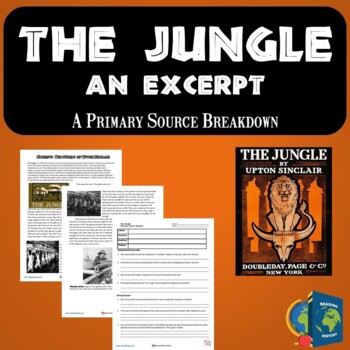The Jungle Upton Sinclair Reading Worksheet
- PDF
- Easel Activity
What educators are saying
Description
"The Jungle" was written by Upton Sinclair and is one of the most provocative and influential pieces of literature during the Progressive Era. Upton Sinclair worked in a Chicago Meat Plant for 7 weeks, and during his time, he recorded his observations. They were then shared in his publication of his book "The Jungle".
This supplemental resource includes the reading of an excerpt from the book that focuses on the working conditions and unsanitary environment of the plant. It includes comprehension and critical thinking questions, as well as an answer key.
This primary source follows the reading strategy of SOAPstone. If you are unfamiliar with SOAPstone, please download my free resource on this reading strategy.
It is an extremely easy strategy to use when breaking down any reading material. This speech is no exception. I hope you enjoy this resource!
Looking for other resources from the Progressive Era? Check these out!






